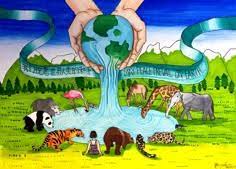
Plant Trees to Fight Global Warming. This phrase is more than just a slogan. It represents one of the most impactful and natural solutions to the climate crisis. In recent years, climate change has become one of the most urgent threats to our planet. For example, rising temperatures, and erratic weather patterns are just a few of the alarming signals that we simply cannot ignore.
Consequently, many global campaigns and local movements have emphasized this powerful and sustainable remedy to plant trees to fight global warming. Not only is this approach but it is also gaining global attention for its profound environmental, social, and economic benefits.
Before we explore how tree planting contributes to climate action, it is important to first understand the concept of global warming. Essentially, global warming refers to the long-term rise in Earth’s average temperature, caused primarily by increasing concentrations of greenhouse gases (GHGs) such as carbon dioxide (CO₂), methane (CH₄), and nitrous oxide (N₂O).
These gases, once released into the atmosphere, trap heat and contribute to what is known as the greenhouse effect. As a result, our planet experiences rapid warming, leading to rising sea levels, frequent and intense natural disasters, loss of biodiversity, and severe impacts on agriculture and human health.
Therefore, in order to reduce these consequences, we must take bold and immediate action. One of the most effective solutions available to us is to plant trees to fight global warming, a strategy that is both accessible and immensely powerful.
Why Trees Are Essential and the Science Behind:

Trees are nature’s most effective carbon sinks. They absorb carbon dioxide through the process of photosynthesis, store it within their biomass, and release life-sustaining oxygen back into the atmosphere. On average, a single mature tree can absorb up to 22 kilograms of CO₂ per year. Now, imagine the cumulative impact if individuals and organizations across the world were to plant trees on a massive scale.
In addition to carbon absorption, trees provide numerous environmental benefits. They offer shade, reduce urban heat, prevent soil erosion, and significantly enhance biodiversity. Due to their remarkable ability to capture and store carbon, trees serve as a crucial tool in our global efforts to combat climate change.
At the heart of this process is photosynthesis—a natural and efficient mechanism by which trees absorb carbon dioxide and sunlight to generate energy. This allows them to store carbon in their trunks, branches, roots, and leaves. In particular, forests especially tropical rainforests, act as immense carbon reservoirs, which is absorbing billions of tonnes of CO₂ each year.
Therefore, when we plant trees to fight global warming, we are actively increasing the Earth’s natural capacity to neutralize carbon emissions. According to scientific studies, large-scale reforestation and afforestation efforts could potentially remove more than one-third of the carbon dioxide emitted by human activities.
From Destruction to Restoration: The Journey of Our Forests:

Historically, deforestation has been driven by human expansion, agricultural activities, and industrialization. As a result, the loss of forests now contributes nearly 20% of global greenhouse gas emissions, surpassing even the emissions from the entire transportation sector.
However, this alarming trend is gradually reversing in some regions, thanks to growing environmental awareness. More and more, nations, communities, and individuals are taking proactive steps to plant trees, thereby restoring ecological balance and significantly reducing their carbon footprints.
Moreover, several international movements have emerged to emphasize tree planting as a critical climate action strategy. For example, the UN’s Trillion Tree Campaign, initiated by the UNEP and its global partners, encourages countries to plant one trillion trees worldwide to combat climate change.
Similarly, the Bonn Challenge aims to restore 350 million hectares of degraded land by the year 2030. Together, these initiatives advocate a powerful and unified message: plant trees to fight global warming and build a greener, more sustainable future for all.
India’s Green Mission: Leading the Tree Plantation Movement:
India has emerged as a strong advocate to support this mission of reforestation. Initiatives like the Green India Mission and Van Mahotsav actively promote afforestation on both private and public lands. Furthermore, state governments, NGOs, and educational institutions are collectively stepping up their efforts to plant trees and raise awareness to fight global warming.
At the same time, young people today are more climate-conscious than ever before. Consequently, schools, colleges, and universities across the globe are encouraging students to take active part in plantation drives and join environmental clubs. The core message remains the same: if we truly want to protect our future, we must plant trees to fight global warming.
Moreover, educating the youth about the importance of trees not only spreads critical environmental awareness but also nurtures a generation of responsible citizens who value and respect nature. From science fairs to eco-clubs, these student-led initiatives are genuinely making a tangible and lasting difference.
Community Action in Planting a Trees for Climate and Biodiversity:
Across the globe, communities have repeatedly demonstrated that collective action can bring about meaningful and lasting change. Whether it’s neighborhood groups, local NGOs, or faith-based organizations, an increasing number of people are joining hands to plant trees in their immediate surroundings.
Importantly, community-led tree planting initiatives ensure the long-term care and maintenance of saplings, which is often lacking in large-scale top-down projects. At the same time, these initiatives foster a deep sense of ownership and pride among residents. Furthermore, they generate employment opportunities and bolster local economies, especially in rural and economically marginalized regions.

Beyond their social and economic advantages, tree planting efforts have a powerful environmental impact. Not only do they help mitigate the effects of climate change, but they also contribute to the protection of endangered species and the restoration of damaged habitats. Given that forests provide shelter to more than 80% of the world’s terrestrial animals and plants, the decision to plant trees also becomes a step toward preserving global biodiversity.
Moreover, restored green spaces invite pollinators, birds, and various forms of wildlife, thereby enhancing ecological balance and supporting long-term food security. In essence, planting trees serves as a dual-purpose solution addressing both the climate crisis and the urgent need for biodiversity conservation.
Benefits of Reforestation in Spiritual and Cultural Dimensions:

Planting trees isn’t just beneficial for the environment but it’s also economically rewarding. Reforestation has the potential to boost tourism, sustainably provide timber, support agroforestry, and generate a wide range of green jobs.
Moreover, choosing to plant trees in societies can lay the foundation for climate-resilient economies. As a result, environmental restoration efforts not only protect the planet but also stimulate economic growth. From paperless offices to eco-conscious startups, there is a rapidly expanding market for sustainable products and green business practices.
Many cultures around the world view trees as sacred symbols of life, growth, and harmony. Specifically, in Indian tradition, trees like Peepal, Banyan, and Neem are deeply revered and actively protected. Moreover, festivals such as Van Mahotsav are celebrated annually to honor and promote the importance of greenery in daily life.
These spiritual connections, therefore, serve as powerful motivators for environmental action. When individuals choose to plant trees, they are not only contributing to climate solutions but also nurturing age-old values of peace, balance, and deep respect for nature.
Taking Action to Plant Trees and Protect the Planet:

Whether you’re an individual, a student, a business owner, or a policymaker, you have a role to play in addressing climate change. You can take simple actions, such as planting a single tree in your yard, supporting a local or global reforestation campaign, or donating to a reputable tree-planting NGO. After all, every effort, no matter how small, contributes to a larger impact.
At present, our planet is facing an unprecedented environmental crisis, and the solution truly lies in our collective hands. Therefore, we must come together to plant trees to fight global warming, not just for our well-being today, but for the future of generations to come.
Ultimately, the decision to plant trees to fight global warming is far more than a symbolic environmental gesture. It is an urgent necessity. Indeed, it offers a direct, effective, and affordable means to reduce carbon emissions, enhance biodiversity, improve air quality, and restore ecological balance across ecosystems.

